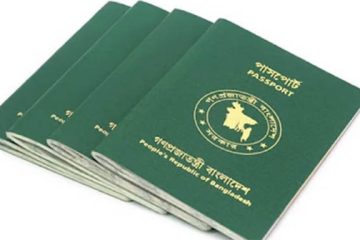Most of the private construction firms in the capital are flouting the provisions of the Bangladesh National Building Code 2006 which require them to ensure the safety of people.
They do not even follow the safety rules required for workers. Inadequate safety measures increased the number of death of workers in construction sites. The latest construction site accident took place on Thursday evening when four workers died after the carrier of a construction lift had broken off at Kakrail in the city.
The situational analysis on labour rights carried out by the Bangladesh Institute of Labour Studies shows that the number of construction workplace related accidents was 73 in 2010.
The number of workplace related accidents was 56 in 2009 and 100 in 2008.
The BILS review, titled ‘Situation and condition of workers in the construction industry in Bangladesh: Review 2007,’ said that 592 construction workers had died between 2005 and 2007.
The report also said that about 68 per cent of the workers blamed the lack of safety gear for the deaths and about 43 per cent of them complained that after the accidents, the workers got no compensation from the employers.
Representatives of some developer companies alleged that the workers were reluctant to use safety gear while the construction workers alleged that they do not get most of these gears.
After inspecting building sites in Uttara, Dakkhinkhan, Banani, Mirpur Sections 1, 2, 10 and 14, Pallabi, Mohammadpur, Tejgaon, Sher-e-Bangla Nagar, Kachukhet, Azimur and Cantonment, found that most government and privately owned multi-storied buildings under construction did not have even the minimum safety measures.
Residents living adjacent to construction sites expressed deep concern about the safety of pedestrians who may be killed or injured by construction materials, including bricks and bamboo poles, falling from the buildings being built.
‘We need hard helmets to protect us,’ said Abid Al Azad, who was walking beside a construction site of Janata Housing in Mirpur-1.
Section 7 of the BNBC states, ‘Erection, alteration, renovation, re-modelling, repairing or demolition of a building or structure shall be conducted in a safe manner…Suitable protection of the general public shall be provided according to the various provisions of this Code.’
Developers are supposed to install safety nets to stop the materials from falling to the ground or on people.
Concern about the failure of developers to take steps to protect the public have come to the fore after the death of Habibur Rahman, 18, on July 16, who died when a brick fell on his head, reportedly from a 15-storey building under construction, called Sagufta De-Khan, which is being built by the Sagufta NM Housing Apartment Project on 77, Panthapath.
The workers of the building hurriedly installed a safety net and fled the scene, said a number of witnesses.
Abu Shoyeb Khan, director of marketing of the Sagufta NM Housing Apartment Project, said the brick might have fallen from another building as adequate measures had been taken in his building.
The police said that a case was filed against workers under Section 304A of the Penal Code, but no case has been filed against the developer.
However, the High Court on Tuesday summoned the chairman and managing director of the Sagufta Group to appear before the court on July 26 in connection with the teenage student’s death.
In its order the court also asked the company to explain why it should not be punished for failing to take appropriate safety measures and why it should not be directed to give compensation to the family of the victim.
Though Section 7 of the BNBC focuses on the safety of the workers, it does contain some provisions relating to the safety of the public.
‘Every walkway adjacent to a construction, demolition or excavation site shall be kept well lighted at night. The outer edge of the occupied space of streets or footpath shall have red lights placed thereon which shall flash continuously day and night,’ says Section 7.
But during a visit to Shankar on the night of July 17, it was seen that there was no light on the footpath beside GHL Shahida Dream, which is being constructed by the Greho Noksha Holdings.
The BNBC also includes the developers’ obligation to employ a watchman whose job it is ‘to warn the general public when intermittent hazardous operations are conducted. Audible signals shall be used in case of extreme danger.’
The private firms do employ men to guard their construction materials, but not to warn members of the public about hazards on the site, a guard in Mirpur told New Age.
Masfiqe-e-Rahman, who was injured by a stone that fell on his shoulder while he was walking in Mirpur-1 last week, told New Age that that building had no safety measures in place.
In addition to the responsibility directly imposed upon the building’s owner and developer, the BNBC also requires engineers, architects and planners to ‘ensure compliance’ with the provisions of the Code.
The BNBC became law when it was gazetted under the Building Construction Act 1952 in 2006, which contains the provision of a possible punishment of seven years of imprisonment for non-compliance.
The Code is supposed to be enforced by the Rajdhani Unnayan Kartripakkha, but its officials say that they only have sufficient manpower to enforce the provisions of the Code relating to the building’s design, and not the safety measures when construction is taking place.
Rajuk’s chairman Nurul Huda told New Age that his organisation only approves the design of a proposed building and has no legal mandate to enforce safety measures on a construction site.
He said that they have proposed that the Rajuk be empowered to enforce safety measures when the BNBC is updated.
The government first drafted the Bangladesh National Building Code in 1993, which came into effect with a gazette notification issued on 15 November, 2006 and is now under review.
-With New Age input




















